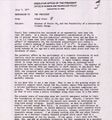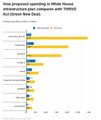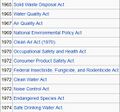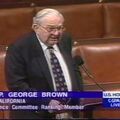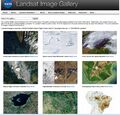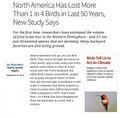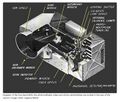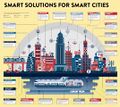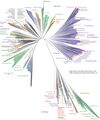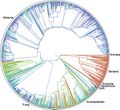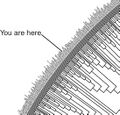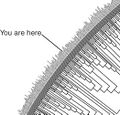Category:Ecological Economics
Extending and integrating the study and management of nature's household (ecology) and humankind's household (economics)
https://en.wikipedia.org/wiki/Ecological_economics
_ _ _ _
https://en.wikipedia.org/wiki/Herman_Daly
http://islandpress.org/herman-e-daly
Conventional economics is often criticized for failing to reflect adequately the value of clean air and water, species diversity, and social and generational equity. By excluding biophysical and social systems from their analyses, many conventional economists overlook problems of the increasing scale of human impacts and the inequitable distribution of resources.
Ecological Economics speaks to an emerging paradigm that addresses this flaw in much economic thought. Ecological economics is a revolutionary "transdiscipline" that incorporates insights from the biological, physical, and social sciences... a new interdisciplinary framework that embraces the linkages among economic growth, environmental degradation, and social inequity.
_ _ _ _
Eco-nomics
Ecological economics vs. conventional economics
Ecological economics is a growing transdisciplinary field that aims to improve and expand economic theory to integrate the earth’s natural systems, human values and human health and well-being. In conventional economics, the primary goal is to increase goods and services produced by human industries (built capital), and the gross domestic product (GDP) is a national measure of the total value of goods and services produced annually. Conventional economics assumes that ever-increasing GDP is desirable, possible, and that everyone benefits.
Ecological economics takes a broader perspective and recognizes that there are more things that contribute to human well-being than just the amount of stuff, such as health and education (human capital), friends and family (social capital) and the contribution of the earth and its biological and physical systems (natural capital). Its goal is to develop a deeper scientific understanding of the complex linkages between human and natural systems, and to use that understanding to develop effective policies that will lead to a world which is ecologically sustainable, has a fair distribution of resources (both between groups and generations of humans and between humans and other species), and efficiently allocates scarce resources including “natural” and “social” capital. Four main types of capital are considered in ecological economics:
• Built capital is the type of capital we are used to thinking about in conventional economics. It refers to goods and services created by human industry – buildings, cars, appliances, roads, toys, etc. • Natural capital is a concept that recognizes the importance and value of the goods and services provided by nature. It goes beyond the traditional consideration of natural products as raw materials for conversion into goods (trees into houses or paper) to consider functions that are provided by planetary systems (breathable air, a stable climate) or local ecosystems (flood protection by coastal wetlands, and drinking water purification by forests). Sometimes the monetary value of these ecosystem services can be calculated, such as the cost to replace them with built capital (coastal wetlands with levees). However, some natural services are priceless. They are essential for life, and irreplaceable (breathable air). • Social capital refers to the positive benefits gained through our interactions with others (friends, family, social groups) and the common structures of our society (languages, institutions, educational system, laws). It makes a major contribution to our collective well-being, but is hard to quantify in monetary terms. • Human capital refers to the sum of our own health, personal experiences, education, talents, skills and interests. Collective human capital (and social capital) cannot be maximized unless there is social justice, equivalent access to the opportunities that our society provides.
What is sustainability and how does it relate to Ecological Economics?
Ecological economics reminds us that "sustainability" is a multi-faceted goal by focusing on the complex interrelationship between different elements of sustainability: ecological sustainability, social sustainability and economic sustainability. It reminds us of the complexity of the many interacting systems that make up the biosphere and the uncertainty that is a fundamental characteristic of all complex systems. Ecological economics is concerned with the problem of assuring sustainability in the face of uncertainty, and aims to maintain the resilience of ecological and socioeconomic systems by conserving and investing in natural, social and human assets.
Ecological economics also seeks true economic efficiency. Economic efficiency and good economic decision making are not possible if all of the costs and benefits are not considered or included in prices. Often current market prices do not capture the full costs of an economic activity that depletes resources or damages natural systems (natural capital); or inflicts costs to human health and well-being (social and human capitals) caused by pollution or other side effects of the activity. These excluded costs are called "externalities", defined as costs that are not included in the price of the product but are shouldered by a third party, outside the producer/seller and buyer/consumer. Capture of these costs in the market would provide a powerful incentive to move towards sustainability.
Subcategories
This category has the following 7 subcategories, out of 7 total.
A
B
D
E
N
S
Pages in category "Ecological Economics"
The following 200 pages are in this category, out of 245 total.
(previous page) (next page)A
B
C
- Cabo Verde
- Cambodia
- Cameroon
- Canada
- Capitalism and the Environment
- Central African Republic
- Chad
- Chile
- China
- Climate Problems, Climate Solutions
- Climate Smart Agriculture
- Colombia
- Comoros
- Convention on Biological Diversity
- Cook Islands
- Costa Rica
- Cote d'Ivoire/Ivory Coast
- Croatia
- Cuba
- Cyprus
- Czech Republic
E
G
I
L
M
N
O
P
Q
S
Media in category "Ecological Economics"
The following 119 files are in this category, out of 119 total.
- 1977 from the Office of Science and Technology Policy.jpg 661 × 711; 177 KB
- A root and its mycorrhizal fungus surroundings.PNG 315 × 382; 236 KB
- American Jobs Act compared w THRIVE Act (Green New Deal).jpg 674 × 798; 90 KB
- Anthropocene bks016.png 800 × 248; 227 KB
- Anthropocene-crutzen.jpg 628 × 347; 79 KB
- Anthropocene-the-geology-of-humanity.jpg 628 × 347; 79 KB
- AOC March 26, 2019.jpg 597 × 433; 58 KB
- Apple varietals.jpg 600 × 314; 30 KB
- Arable land percent world.png 1,357 × 628; 40 KB
- Biggest climate related legislation in history - 1.png 800 × 188; 68 KB
- Bioneers conf 2016.png 700 × 499; 1.03 MB
- Caroline Lucas-Green New Deal.jpg 584 × 391; 71 KB
- Challenge of Acting for the Commons.png 700 × 548; 175 KB
- Climate Goals off course - 2018.png 800 × 556; 214 KB
- Climate-Action-Plan-World Bank-2016.png 780 × 6,050; 3.2 MB
- Co-operative Enterprises ica.coop.png 704 × 339; 173 KB
- Commons-concepts permanent culture now s.png 448 × 211; 75 KB
- Commons-concepts permanent culture now.png 830 × 391; 39 KB
- Congressman george.e.brown.gif 235 × 305; 41 KB
- Deepeconomypb-mckibben.jpg 200 × 305; 16 KB
- DJT - US message to world.jpg 800 × 266; 45 KB
- Earth Breathing.jpg 800 × 450; 117 KB
- Earth in Human Hands Intro.png 622 × 423; 121 KB
- Earth, our home, 7.7 billion humans on that dot of life.jpg 680 × 680; 50 KB
- ECO-NOMICS.jpg 419 × 131; 0 bytes
- Energy - Electric Measuring and Monitoring.png 715 × 1,978; 862 KB
- Env policy laws US 'the beginning' of env era.jpg 370 × 345; 65 KB
- EPA and the Green Bank - Feb 2023.png 476 × 542; 244 KB
- EPA History Xin Liu-2010.pdf ; 2.88 MB
- Four Futures.jpg 185 × 290; 11 KB
- Frackers dont clean up.jpg 591 × 493; 60 KB
- G Earth Outreach.jpg 800 × 412; 44 KB
- George Brown 1969-Reflections on US Role in the World.png 700 × 372; 99 KB
- George Brown, Sci Com't.jpg 200 × 200; 7 KB
- Global Green New Deal.jpg 427 × 640; 32 KB
- Green Collar Economy.jpg 100 × 160; 6 KB
- Green Marketing tag cloud 3.png 819 × 406; 128 KB
- Green New Deal - Bloomberg Jan 29,2019.png 640 × 757; 589 KB
- Green New Deal - Resolution.pdf ; 55 KB
- Green New Deal - Strategic Demands - Oct 1, 2021.png 602 × 658; 245 KB
- Green-New-Deal-December-2018-1.png 800 × 634; 207 KB
- Hansen testimony WaPo front page.jpg 480 × 210; 40 KB
- INDIA INDC TO UNFCCC Dec2015.pdf ; 909 KB
- JasonHickel.org.jpg 640 × 351; 36 KB
- Jerry Brown 92 Presidential Platform We the People.jpg 448 × 586; 40 KB
- Jerry w Steve '92 pres campaign at the Dem plat hearing m.jpg 416 × 492; 44 KB
- Landsat Image Gallery.jpg 800 × 766; 187 KB
- Largest-Economy.jpg 497 × 370; 54 KB
- Living Diversity or Not in Your Home Yard.png 436 × 640; 582 KB
- Living Earth.png 441 × 183; 106 KB
- Loss of N American Birds - 1.jpg 800 × 788; 173 KB
- Lost Gospel of the Earth by Tom Hayden.jpg 696 × 1,069; 64 KB
- Manchin again - July 15 2022.png 600 × 654; 523 KB
- Memories of Big Science advocates in the US Congress.jpg 583 × 279; 87 KB
- Multispectral Scanning Systen - MSS.jpg 688 × 587; 103 KB
- Mushroom life in the forest.png 640 × 458; 626 KB
- NASA has a new mission... against Methane.png 800 × 576; 681 KB
- Necessary Trouble.jpg 185 × 290; 16 KB
- New Zealand INDC 2015.pdf ; 315 KB
- No Shortcuts.jpg 185 × 290; 15 KB
- NZ INDC Addendum 25 11 2015.pdf ; 217 KB
- Overshoot presentation - Rees 2.png 640 × 246; 81 KB
- Overshoot presentation by Prof William Rees - 2021.jpg 640 × 432; 76 KB
- Post Capitalism.jpg 185 × 290; 21 KB
- Poverty 2019.jpg 800 × 673; 91 KB
- Protect the Natural World.jpg 800 × 345; 78 KB
- Rebuild the Dream.jpg 100 × 160; 6 KB
- Red Crow Westerman.png 480 × 552; 694 KB
- Renewable Energy investment growth chart 2004-2014.jpg 600 × 368; 31 KB
- Renewable Potential US-Utility Scale PV.png 660 × 514; 57 KB
- Rep. George E Brown and a young student remembering.png 640 × 325; 109 KB
- Rules for Revolutionaries.jpg 185 × 290; 20 KB
- Smart cities-2017.jpg 1,070 × 957; 185 KB
- Surprise climate deal.png 589 × 735; 83 KB
- The Daily Puffin.png 768 × 800; 766 KB
- The Hidden Universe - Adventures in Biodiversity.png 768 × 959; 365 KB
- The U.S. Role in the World ... Congressman George E Brown - 1969.jpg 448 × 334; 104 KB
- This is an uprising.jpg 185 × 290; 8 KB
- Timelapse in Google Earth -1.jpg 800 × 241; 69 KB
- Timelapse in Google Earth-2.jpg 800 × 469; 151 KB
- Timelapse in Google Earth-3.jpg 372 × 556; 52 KB
- Timelapse in Google Earth-4.jpg 525 × 244; 51 KB
- Timelapse in Google Earth-5.jpg 800 × 528; 124 KB
- Tom Hayden-LA-Dec 2015.jpg 650 × 366; 50 KB
- Tom Hayden.jpg 448 × 291; 26 KB
- Tree of Life nmicrobiol201648-f1 via Nature.jpg 695 × 833; 98 KB
- Tree of Life on Hand.jpg 336 × 448; 70 KB
- Tree of Life opensourcetreeoflife m.jpg 400 × 365; 47 KB
- Tree of Life opensourcetreeoflife.jpg 800 × 730; 181 KB
- Tree of Life video.png 646 × 395; 146 KB
- Tree of Life.png 800 × 800; 404 KB
- TreeOfLifeArt s.jpg 396 × 396; 125 KB
- Turbulent Hydro.png 470 × 465; 387 KB
- Urban-agriculture-garden-columbus-ohio.jpg 800 × 600; 121 KB
- US Public Law 95-367.png 732 × 469; 149 KB
- US Role George E Brown 2.pdf ; 151 KB
- US Role George E Brown 3.pdf ; 157 KB
- Venezuela Diciembre 2015 (final).pdf ; 689 KB
- Water Risk Projects.jpg 1,140 × 518; 124 KB
- Water Risk WWF2011.pdf ; 4.28 MB
- Water stress by country.png 2,159 × 1,115; 584 KB
- Water stress index map maplecroft.jpg 518 × 303; 123 KB
- World Bank Group Climate Action Plan Apr2016.png 522 × 729; 244 KB
- World Bank Group Climate Change Action Plan 2016.png 512 × 256; 167 KB
- You are here on the cladogenetic tree m.jpg 545 × 521; 73 KB
- You are here on the cladogenetic tree.jpg 1,048 × 1,002; 230 KB
